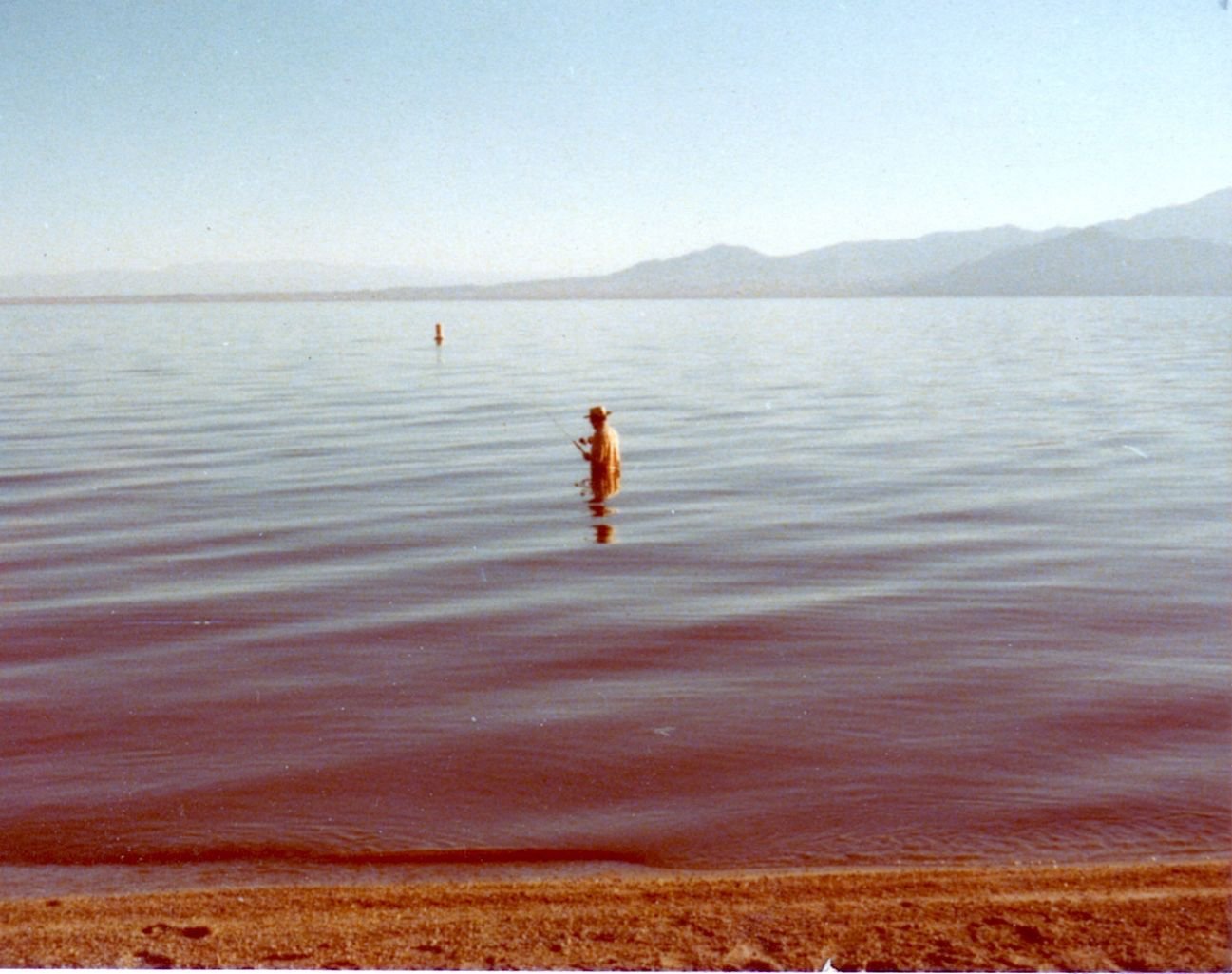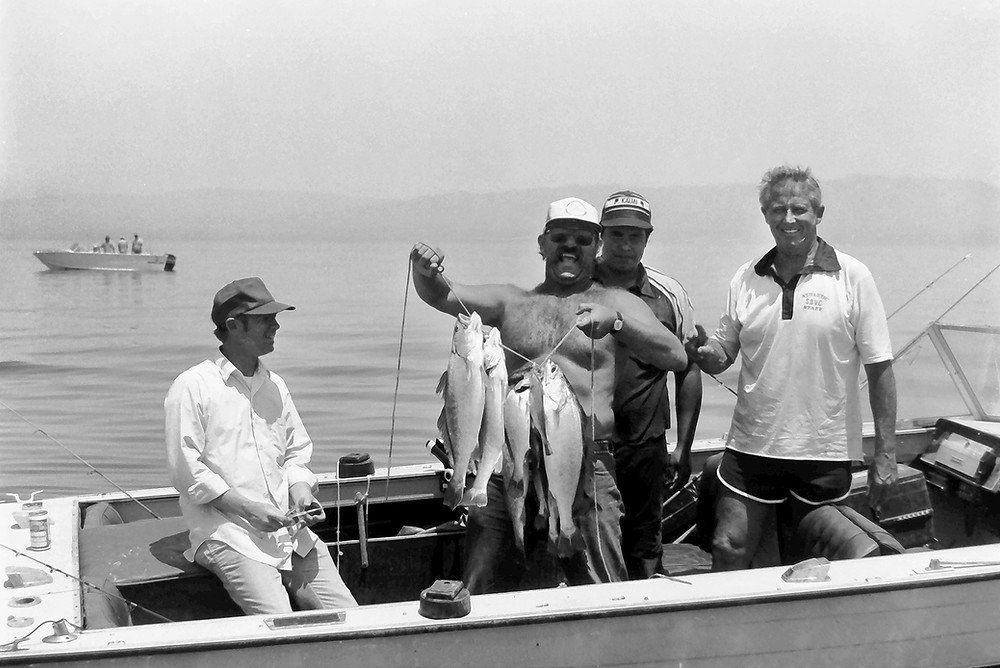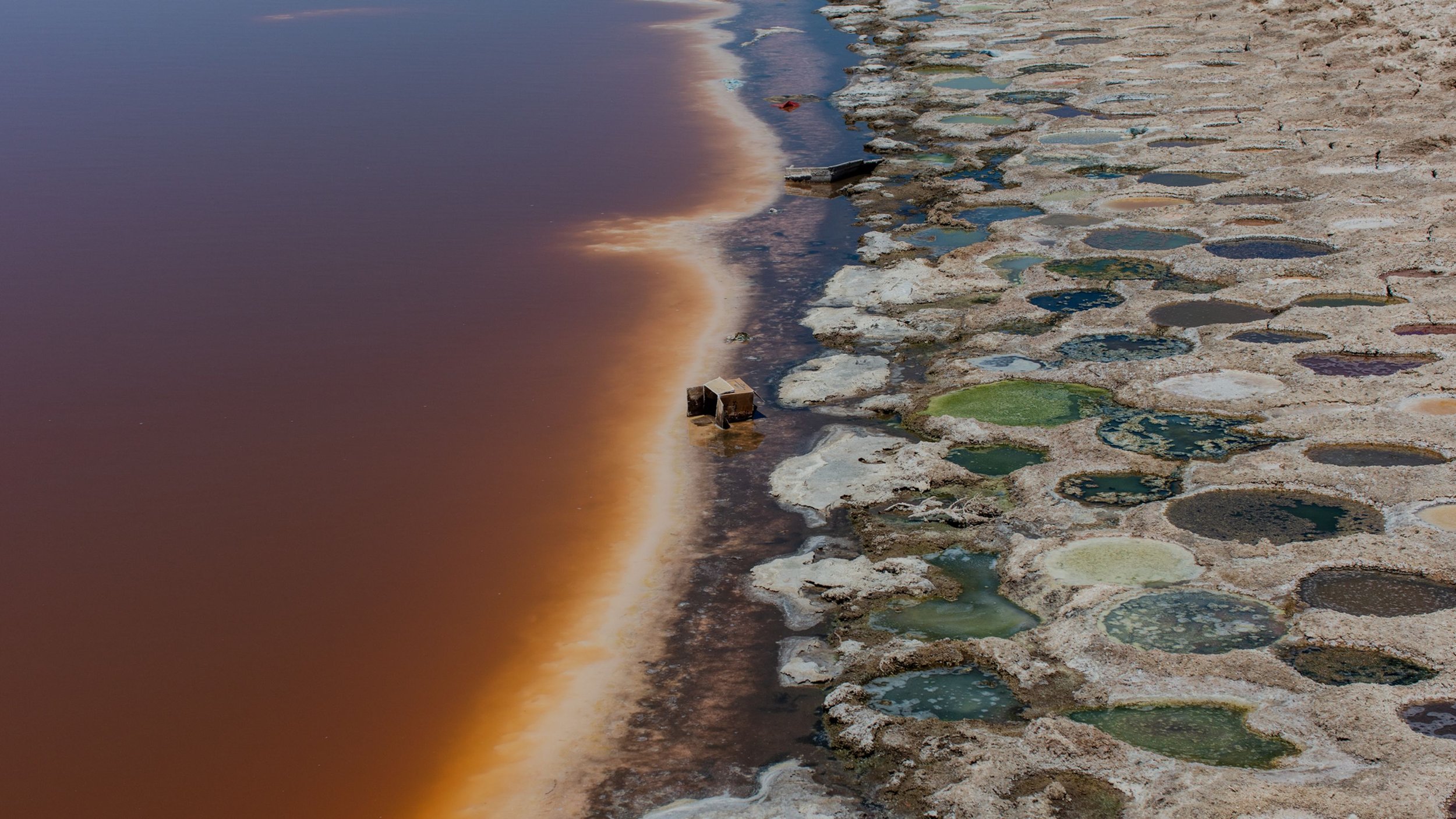






Excerpted text sourced from Green Matters
Slideshow Photography by Alex Welsh sourced from The Verge
Welcome to The Salton Sea
California's largest lake, the Salton Sea, was once a destination for visitors seeking out gorgeous views, and a nice place to swim and relax — but because of pollutive human activities, that's just a memory. The Salton Sea now happens to be one of the most polluted lakes in the state, with polluted air, copious amounts of dust making it hard to breathe, and algal blooms, which contaminate the water. In fact, the area is expected to be deemed completely "unlivable" within the next few years. by 2030, the lake is predicted to expose more dust than ever before — which could seriously harm locals.
“All that dust that gets exposed would mean even more breathing problems and more allergies and asthma for the people who live here,” USC environmental epidemiologist, Shohreh Farzan, told The Guardian. It's a serious yet fixable issue that's gotten seriously out of hand.
Why is the Salton Sea so polluted?
The Salton Sea has been effectively destroyed by human activity. According to a report from San Diego State University, the shoreline is heavily receding because of rapid evaporation, which is onset by climate change. Temperatures across California have increased exponentially, which causes water to evaporate more quickly. Over time, this has also further exposed large amounts sediment, which is carried by wind. It creates dust and pollutes the air, because the lake is filled with toxins.
Sadly, the Salton Sea also contains incredible amounts of contaminants. The mud is laced with toxic chemicals such as chromium, zinc, lead, and pesticides like DDT. The local economy in the surrounding Imperial County is largely supported by agriculture, and because of pesticide use, according to USCS, these chemicals break into the groundwater, and pollute the lake. This affects the marine ecosystems, as well as people living in surrounding areas. When glyphosate breaks down, it releases phosphorus into the water, which results in the growth of toxic algae. This effectively turns the water completely poisonous, harming animals, vegetation, and humans, upon exposure.
The Salton Sea's conditions are a result of environmental injustices.
The Salton Sea is a devastating public health issue, which can be reversed — though it's been forgotten by the government because it's considered to be an impoverished area that isn't quite as populated as other California cities, according to Desert Sun. Water could be pumped in from the Sea of Cortez to cover the exposed sediment, and the lake could be cleaned, but the problem hasn't been addressed with necessary funds or plans. In 2015, Michael Cohen from the Pacific Institute told The Atlantic that by 2018, conditions were expected to get much worse — and he was right. But he says if this problem were in a more affluent area, the issues would have been resolved. “If the Salton Sea was next to Sacramento, San Francisco, or Los Angeles, the problems would have been fixed a long time ago... the Salton Sea is in bad shape now, but in 2018 it’s going to get much worse, very rapidly," Cohen said at the time. If you'd like to become more informed on this ongoing public health issue, a 2020 documentary titled Miracle in the Desert: The Rise and Fall of the Salton Sea gives more insight into the lake's history. And with that, we recommend always making sure your environmentalism is intersectional — because marginalized communities are often overlooked and wind up facing these types of injustices.
“Only if we understand, will we care. Only if we care, will we help. Only if we help shall all be saved.”
-Jane Goodall